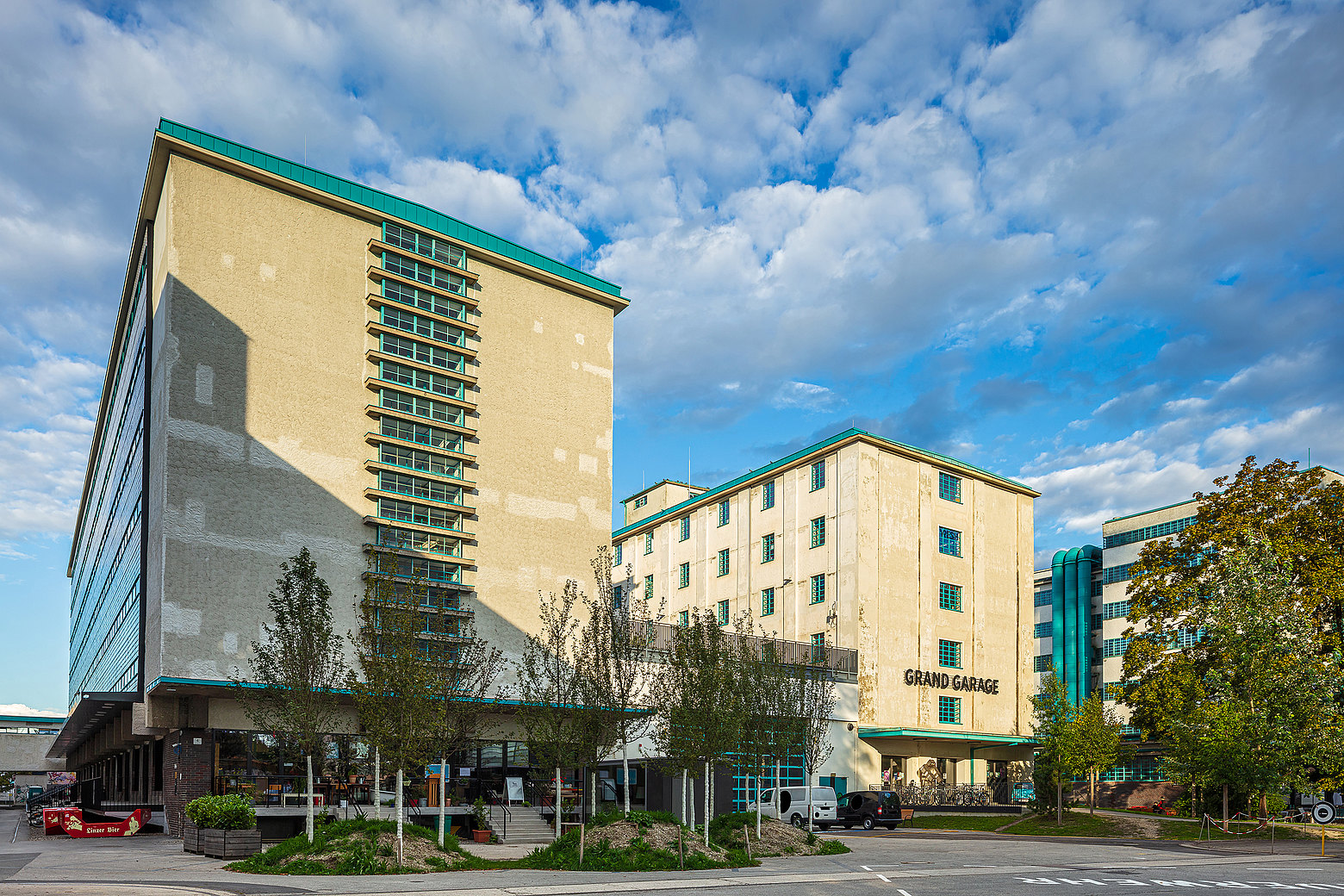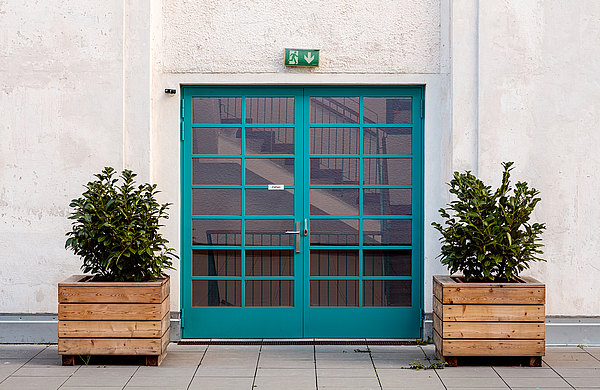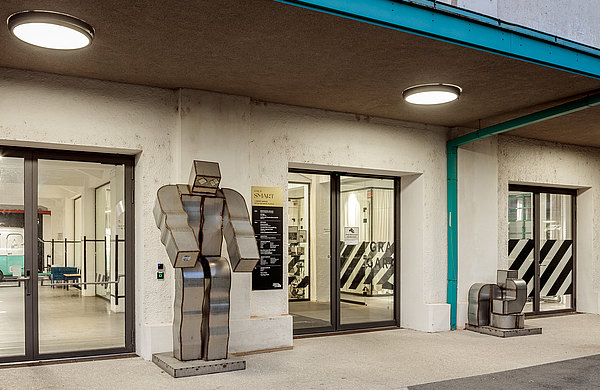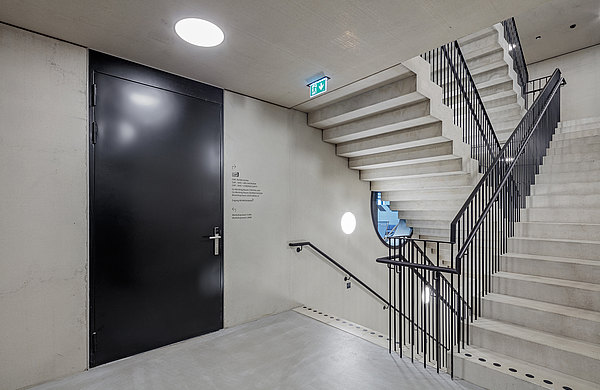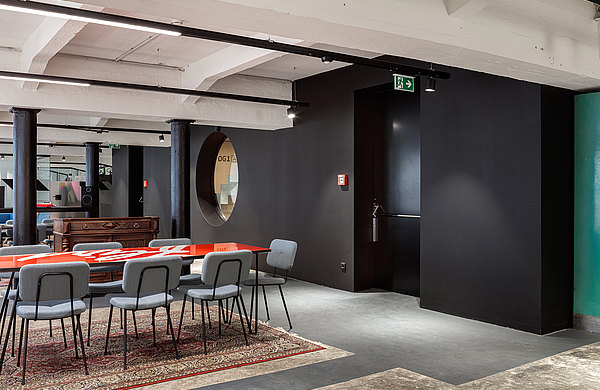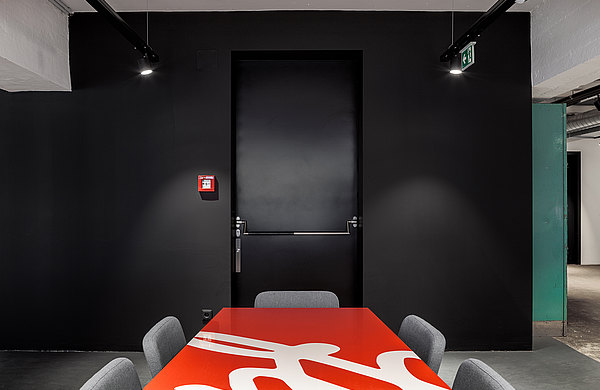Tabakfabrik Linz
From an iconic industrial complex of the modern age to a hub for the creative industries
When German architect, artist and industrial designer Peter Behrens designed Tabakfabrik Linz, he created a special industrial monument spanning some 38,000 square metres. The building complex built in the New Objectivity style in the early 1930s was the first large-scale steel frame building to be constructed in Austria. It was used for its original purpose as a cigarette factory until 2009. The city purchased the existing complex of architectural and historical significance with the intention of converting it to gradually create a hub for the creative industries that would be renowned all across the country. In line with that plan, the old listed building has been respectfully renovated in recent years to make it fit for the future in technical and functional terms. As part of this work, Forster steel profiles have been used in the access elements and fire protection measures.
The building designed by Peter Behrens to the north of Linz city centre towards the end of his career reflects the architectural trends and political developments of the mid-1930s. The industrial complex was used to produce cigarettes for decades, which gave rise to structural modifications and additions over time. During the careful conversion, the listed building has been returned to its original condition. Alongside the main building at the southern edge of the site, which is full of character and measures over 220 metres in length, the complex also includes a power plant in the courtyard, a 60-metre-long building previously used to produce pipe tobacco to the north of the site, and the rooms once used to store the raw materials required for the production processes, some of which are now listed.
A development project with a pioneering use profile
These days, Tabakfabrik Linz is a hub for the post-industrial economy, making this project a shining example of repurposing and urban development. The building complex is now home to a whole host of offices, workshops, event venues and spaces for showcasing the creative, artistic and cultural industries. Start-ups and relatively new businesses working in innovation, technology and digitalisation come together in this space designed to help them hit the ground running. The education and social sectors are not excluded either. Plus, the complex is open to the public and available for temporary projects and events.
Fire resistant doors and slim steel profile systems
Linz-based architectural firm Stögmüller Architekten was selected at the end of a two-stage architectural competition with the brief of respectfully converting the listed Building 1 and Storeroom 3. As allowed for in the original design, the building is now home to a textile company, offices and the Grand Garage – an innovation workshop and maker space for digital and analogue technologies that is open for broad use by the public. The architectural firm also planned for the renovation work to include a full upgrade to state-of-the-art electrics, building technology and fire resistance equipment. Work to improve the building’s energy efficiency involved the installation of heat insulating windows and doors, which are powder-coated in the classic turquoise colour known as ‘Linz Blue’.
All the outside doors with transoms dividing the glass and ultra-slim face profiles made from steel, as per the request of the monument preservation authority, are from the forster unico range. forster unico sliding doors grant access to the entrance area of the Grand Garage from the outside, while double-leaf fire resistant doors are used on the inside. The staircase can be accessed through opaque and flush forster fuego light fire resistant doors. The Swiss company specialising in steel and stainless steel profiles also provided forster fuego light fire protection internal doors for Storeroom 2, which is currently nearing completion.
The Forster profile systems used at Tabakfabrik Linz are proof that it is possible to meet modern building requirements for fire protection and energy efficiency while carefully respecting the signature characteristics of historical architecture.
Linz, Austria
Products:
forster fuego light double-leaf fire resistant doors
forster fuego light fire resistant doors with flush sheet metal
forster unico sliding doors
forster unico thermally insulated outside doors
Architect (including renovation of Storeroom 3): Stögmüller Architekten ZT GmbH, Linz (Austria)
Metal constructor: Pfeiffer Metallbau, Wels (Austria)
Client: Tabakfabrik Linz Entwicklungs- und Betriebsgesellschaft mbH belonging to Stadtentwicklung & Immobilien der Stadt Linz Holding GmbH, Linz (Austria)
Photography: Martin Steinkellner

